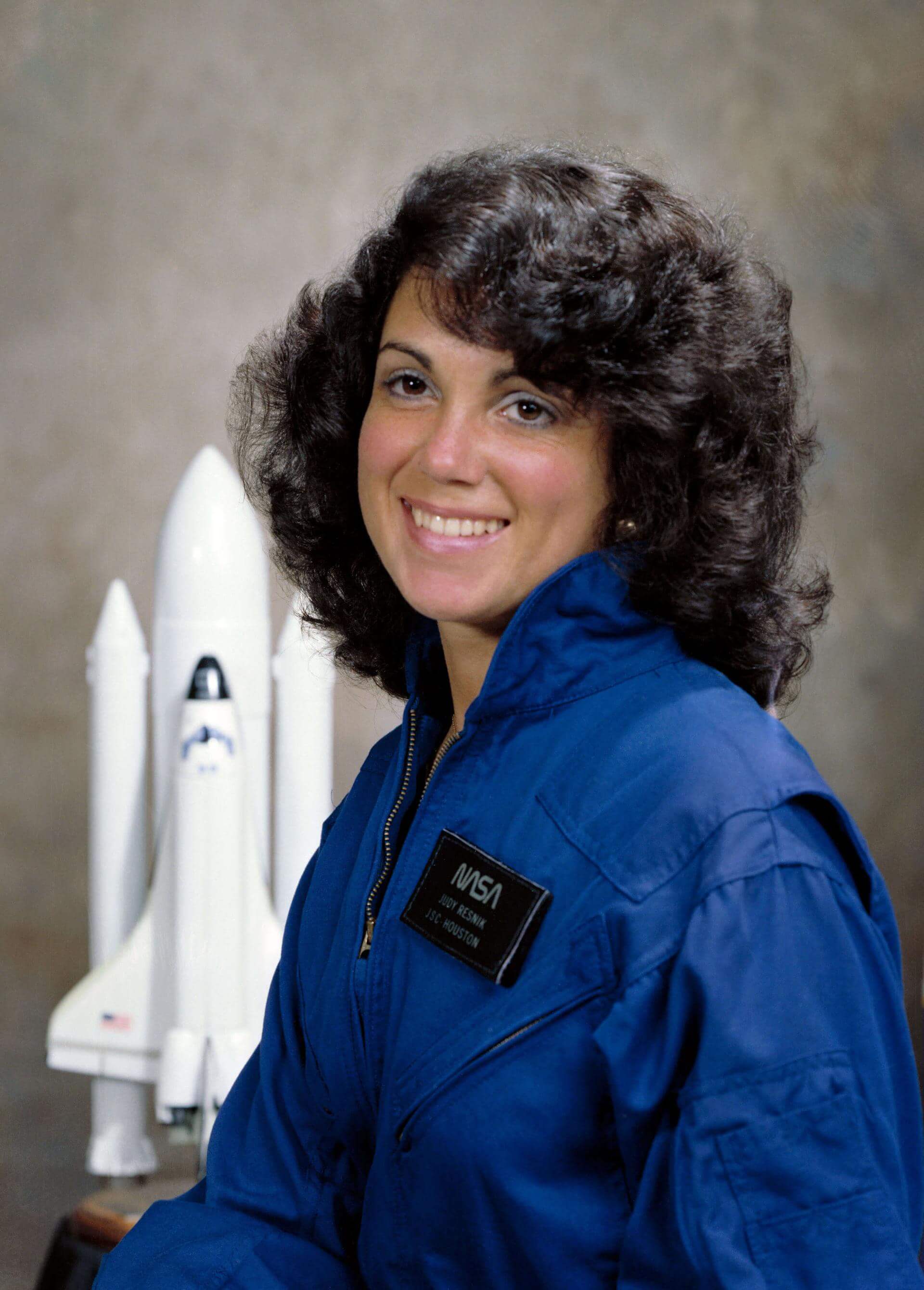Judith Resnik
American - (NASA)
Lost In Flight
Date of Birth: April 5, 1949
Date of Death: Jan. 28, 1986
Judith Arlene Resnik was an American electrical engineer, software engineer, biomedical engineer, pilot and NASA astronaut, who died when the Space Shuttle Challenger was destroyed during the launch of mission STS-51-L. Recognised while still a child for her "intellectual brilliance",[1] Resnik went on to work for RCA as an engineer on NASA missile and radar projects, was a senior systems engineer for Xerox Corporation, and published research on special purpose integrated circuitry, before she was recruited by NASA to the astronaut program as a mission specialist at age 28. While training on the astronaut program, she developed software and operating procedures for NASA missions.[2] She was also a pilot and made research contributions to biomedical engineering, as a research fellow of biomedical engineering at the National Institutes of Health. Initially planning to be a concert pianist, Resnik had turned down a place at the Juilliard School of Music, choosing instead to study mathematics at Carnegie Mellon University after being one of only 16 girls in the United States to have attained 100% scores in her SAT exams at the time. She went on to graduate from Carnegie Institute of Technology in electrical engineering, before graduating with a Ph.D. magna cum laude in electrical engineering from the University of Maryland. Resnik was the second American woman in space, and the fourth woman in space worldwide, logging 145 hours in orbit. She was also the first Jewish American in space, and the first Jewish woman of any nationality in space. The IEEE Judith Resnik Award for space engineering is named in her honor.
Space Shuttle Discovery / OV-103 | STS-41-D
National Aeronautics and Space Administration | United States of AmericaKennedy Space Center, FL, USA
Aug. 30, 1984, 12:41 p.m.
Space Shuttle Challenger / OV-099 | STS-51-L
National Aeronautics and Space Administration | United States of AmericaKennedy Space Center, FL, USA
Jan. 28, 1986, 4:38 p.m.
Status: Failure
Mission:
The tenth mission for Challenger, STS-51-L was scheduled to deploy the second in a series of Tracking and Data Relay Satellites, carry out the first flight of the Shuttle-Pointed Tool for Astronomy (SPARTAN-203) / Halley's Comet Experiment Deployable in order to observe Halley's Comet, and carry out several lessons from space as part of the Teacher in Space Project and Shuttle Student Involvement Program (SSIP).
Low Earth OrbitThe National Aeronautics and Space Administration is an independent agency of the executive branch of the United States federal government responsible for the civilian space program, as well as aeronautics and aerospace research. NASA have many launch facilities but most are inactive. The most commonly used pad will be LC-39B at Kennedy Space Center in Florida.
Long March 3B/E
Fengyun-4C
Launch Complex 2 (LC-2) - Xichang Satellite Launch Center, People's Republic of ChinaChina's geostationary meteorological satellite program FY-4 (Feng Yun 4) is the second generation of chinese geostationary meteorological satellites.
Long March 8A
SatNet LEO Group 17
Commercial LC-1 - Wenchang Space Launch Site, People's Republic of ChinaA batch of 9 Low Earth Orbit communication satellites for the Chinese state owned SatNet constellation operated by the China Satellite Network Group.…
Soyuz 2.1a
Obzor-R No.1
43/4 (43R) - Plesetsk Cosmodrome, Russian FederationNote: Assignment of payloads to this launch is uncertain. The Russian Obzor-R satellite is a planned X-band radar earth observation satellite desi…
LVM-3 (GSLV Mk III)
BlueBird Block 2 #1
Satish Dhawan Space Centre Second Launch Pad - Satish Dhawan Space Centre, IndiaAST SpaceMobile’s Block 2 BlueBird satellites are designed to deliver up to 10 times the bandwidth capacity of the BlueBird Block 1 satellites, requi…
Long March 12A
Demo Flight
Long March 12A Pad - Jiuquan Satellite Launch Center, People's Republic of ChinaFirst test launch of CASC/SAST’s Long March 12A rocket, with a dummy payload. The rocket’s 1st stage attempted to land on a landing pad about 300 km …



